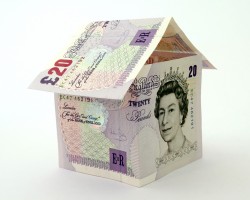
If you’re planning to invest in your first buy-to-let, chances are, you’re looking for somewhere that will provide a good monthly income and increase in value over time. These two key factors shouldn’t be taken lightly and it’s important that you understand them fully before making a decision.
Rental yield
Firstly, it’s important to understand rental yield. This is simply the return you will make on a property through rental income. It can be calculated by dividing the total amount that you paid for the property by the total amount you’ll receive in annual rent.
So, for example, if you spent £150,000 on a house, the stamp duty cost £1,500 and renovation and closing fees were £10,000, that would be a total of £161,500. Then, take your annual rent, which in this case is £15,000 and divide it by the total purchase price (£161,500) which will leave a gross rental yield of 9.3%.
To give you an idea, a rental yield of 7% or above is considered ‘very good’ according to Zoopla.
It’s crucial that you make this calculation and understand to avoid making future losses and ensure that you earn the rental income that you’re looking for.
The good news, if you’re looking to invest in the North West, is according to the latest, Cities House Price Index, the area is currently achieving some of the highest rental yields in the UK.
Capital growth
Capital growth is the other key factor to consider when understanding the value of your property. This is simply the percentage increase of the price of your property over time. So, to work this out, you will need to take the amount you purchased the property for and compare it with a current valuation.
For example, if a house cost £150,000 five years ago and it is now valued at £175,000 this would be an increase of 16.7%.
Given the nature of this figure and the factors which can affect it, it is near on impossible to predict prior to purchasing a property. This is also because house prices generally increase in the long term but can fluctuate in the short term.
There are, however, a number of factors which can often influence property growth, so when investing, it’s worth looking out for the following:
Transport development or upgrades
Take a look at the transport connections in the area you are looking to invest in. What are the public transport connections like? Is there good access to a motorway network? Look out for any future developments too which could positively impact the local transport infrastructure.
Government spending
Evidence that the government is planning to invest in the local area is another key positive. Look out for any planned infrastructure developments, new amenities and transport developments. They are all good signs that the area will improve over time and positively impact the value of your property.
Local ameninies
Particularly in areas close to cities and towns, residents are attracted to amenities. Shops, cafes, cinemas, gyms and other facilities are popular with potential buyers.
Education
Purchasing a property in the catchment area of a high performing state school can do wonders for capital growth. According to a study by Savills, houses in certain areas close to top schools could achieve a 25% higher sale price compared to those that don’t.
To sum up
By understanding rental yield and capital growth you’ll be able to make informed decisions when investing. As a new buy-to-let landlord, it’s important that you avoid risks and plan accordingly to avoid making any losses. Taking the above figures into account will help to mitigate risks and ensure that your first step onto the buy-to-let ladder will be a successful one.
If you’d like any further advice on investing in a buy-to-let property, we’d be happy to help. Call us on 01925 499599 or pop in for a chat with a member of the team.



